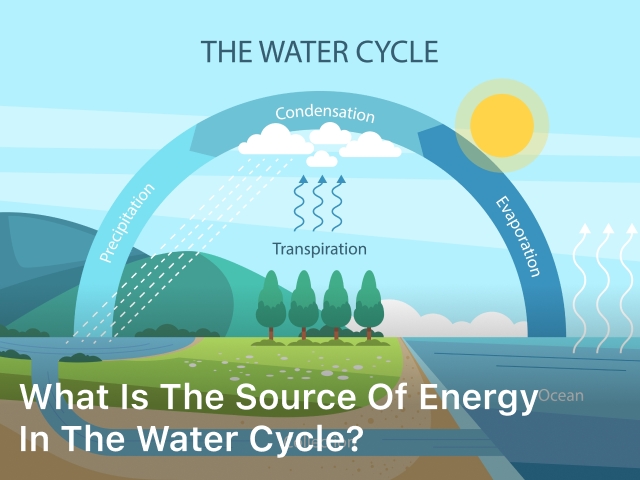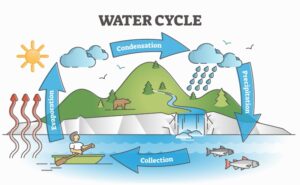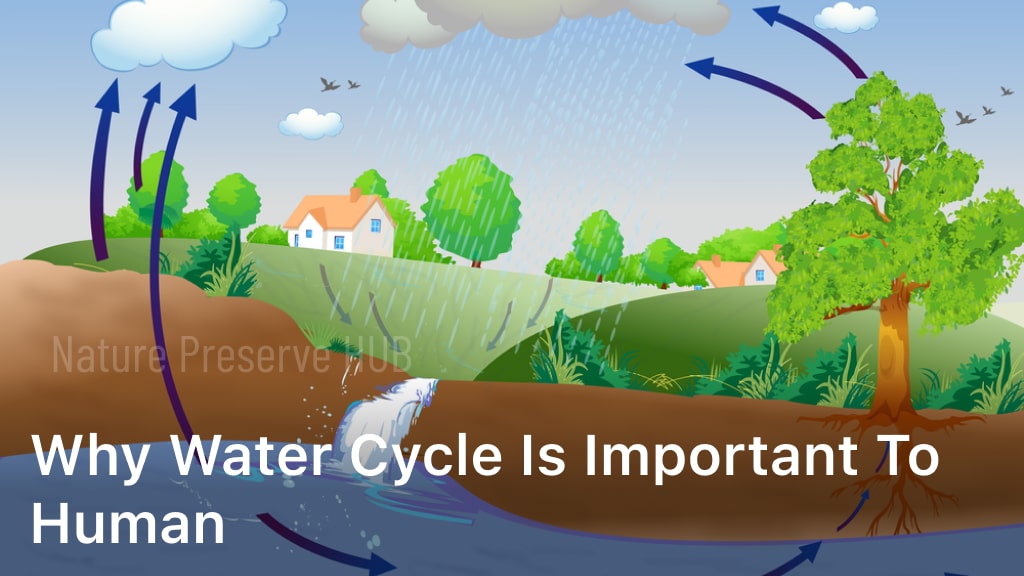What is The Source of Energy in The Water Cycle?

naturepreservehub.com. What is The Source of Energy in The Water Cycle? – Learn about the crucial role of energy in the water cycle. Discover the source of energy driving this natural process. Find expert insights and detailed explanations in this informative article.
The water cycle, also known as the hydrological cycle, is a fundamental process that drives the movement of water around the Earth. This intricate system is maintained by various forces, with energy being the driving factor behind its continuous motion.
In this article, we will delve into the fascinating world of the water cycle and explore the primary source of energy that fuels this essential natural phenomenon.
What is The Source of Energy in The Water Cycle?
The sun stands as the central source of energy in the water cycle. Sunlight, composed of electromagnetic radiation, radiates toward Earth and provides the energy required to power the entire cycle. The sun’s energy plays a pivotal role in each stage of the water cycle, from evaporation to precipitation and everything in between.

The Stages of the Water Cycle
To better understand the role of energy in the water cycle, let’s break down its stages and explore how the sun’s energy influences each one.
1. Evaporation
Evaporation is the initial stage of the water cycle, where water from oceans, lakes, and other water bodies transforms into water vapor due to the sun’s heat. The sun’s energy causes water molecules to gain enough kinetic energy to break their bonds and transition into the gaseous state.
2. Condensation
As water vapor rises into the atmosphere, it cools down and undergoes condensation. During this stage, water vapor transforms back into liquid water droplets, forming clouds. The release of heat energy during condensation warms the surrounding air.
3. Precipitation
When water droplets in clouds combine and grow in size, they eventually become too heavy to remain suspended and fall to the ground as precipitation. This can include rain, snow, sleet, or hail, depending on the atmospheric conditions. The sun’s energy indirectly drives precipitation by setting the entire cycle in motion.
4. Infiltration
After precipitation reaches the ground, some water is absorbed by soil and permeable surfaces in a process known as infiltration. The sun’s energy plays a role here as well, as it warms the ground, promoting the movement of water into the soil.
5. Runoff
Excess water that doesn’t infiltrate the ground becomes surface runoff, flowing into rivers, streams, and eventually making its way back to the oceans. The sun’s energy contributes to this stage by causing the water on Earth’s surface to evaporate and enter the atmosphere, initiating the cycle once again.
The Importance of Energy in the Water Cycle
Energy is the driving force behind the water cycle, enabling the continuous movement of water between Earth’s surface and the atmosphere.
Without the sun’s energy, this cycle would come to a halt, resulting in catastrophic consequences for the planet’s ecosystems, weather patterns, and water availability.
FAQs
Is the sun the only source of energy in the water cycle?
Yes, the sun is the primary source of energy in the water cycle. Its radiant energy fuels the evaporation process, which sets the entire cycle in motion.
Can energy from other sources influence the water cycle?
While the sun is the main source of energy, other factors such as geothermal heat and human activities can have localized effects on the water cycle. However, the sun’s energy remains the dominant force on a global scale.
How does the water cycle impact weather patterns?
The water cycle plays a crucial role in shaping weather patterns by distributing moisture and heat across the planet. Evaporation, condensation, and precipitation contribute to the formation of clouds, rain, and storms.
Are there any negative consequences if the water cycle were to stop?
If the water cycle were to stop, it would lead to severe consequences such as droughts, water shortages, and disruptions in ecosystems. The cycle’s continuous movement ensures the availability of freshwater and maintains environmental balance.
Can human activities affect the energy balance of the water cycle?
Yes, human activities such as deforestation and industrial processes can alter the energy balance of the water cycle. These activities can lead to increased temperatures and changes in local weather patterns.
How does the water cycle connect different bodies of water?
The water cycle connects different bodies of water by constantly circulating water through processes like evaporation, condensation, and precipitation. Water from oceans, lakes, rivers, and even plants participates in this interconnected system.
Conclusion
In conclusion, the water cycle is a remarkable natural process that depends heavily on the sun’s energy for its operation. From evaporation to precipitation, each stage of the cycle is intricately linked and driven by the sun’s radiant energy. Understanding the source of energy in the water cycle enhances our appreciation for the delicate balance that sustains life on Earth.
Remember, the next time you witness a rain shower or gaze at a flowing river, you’re observing the remarkable influence of energy on the water cycle—a true testament to the marvels of our planet’s interconnected systems.





